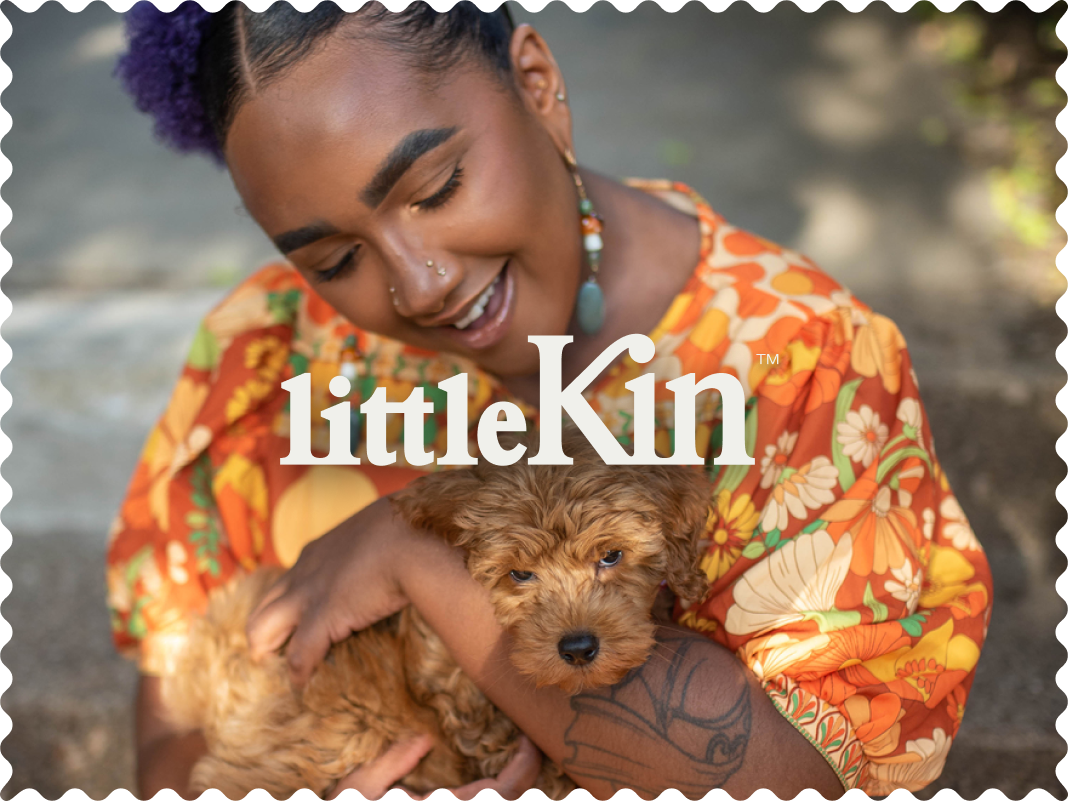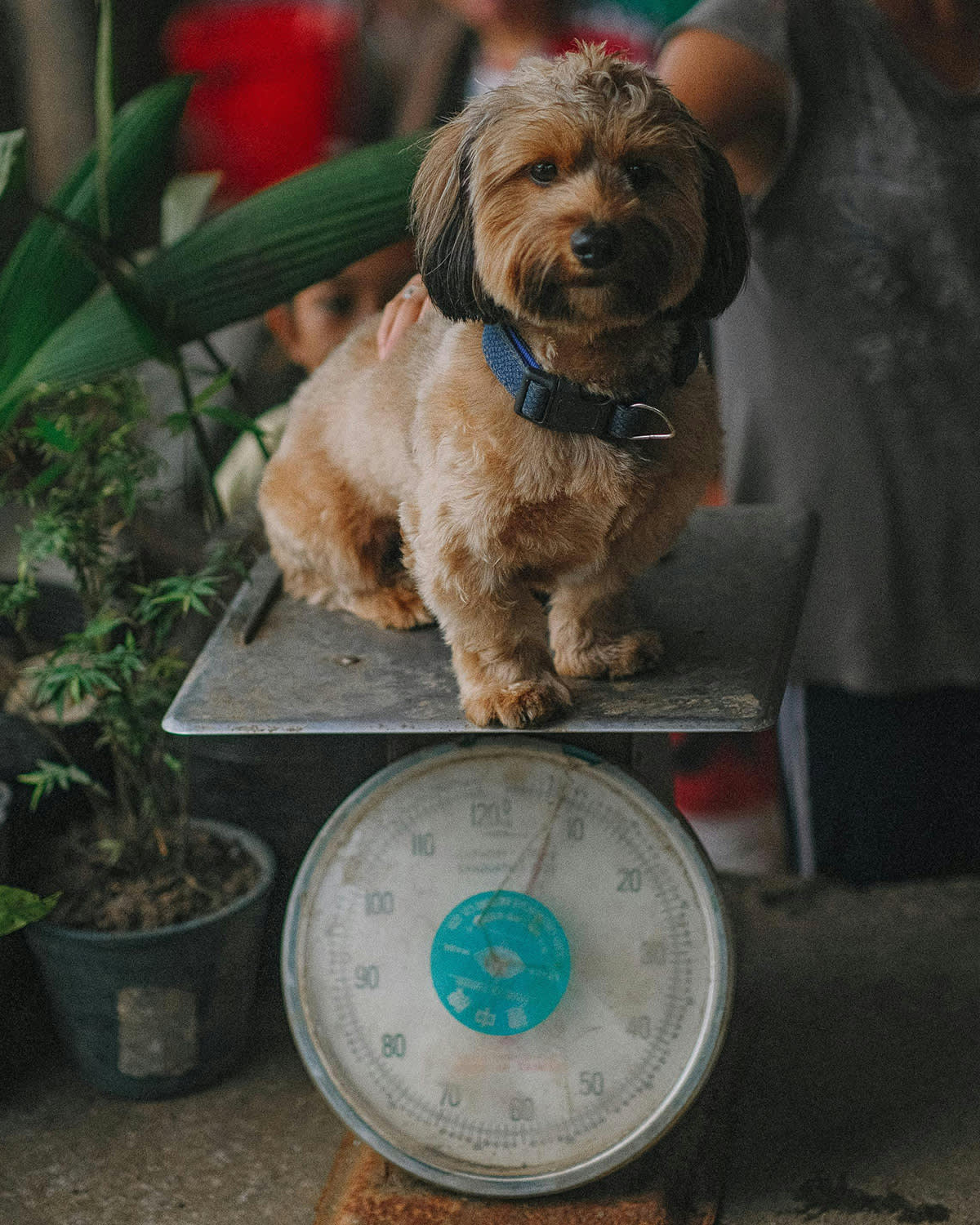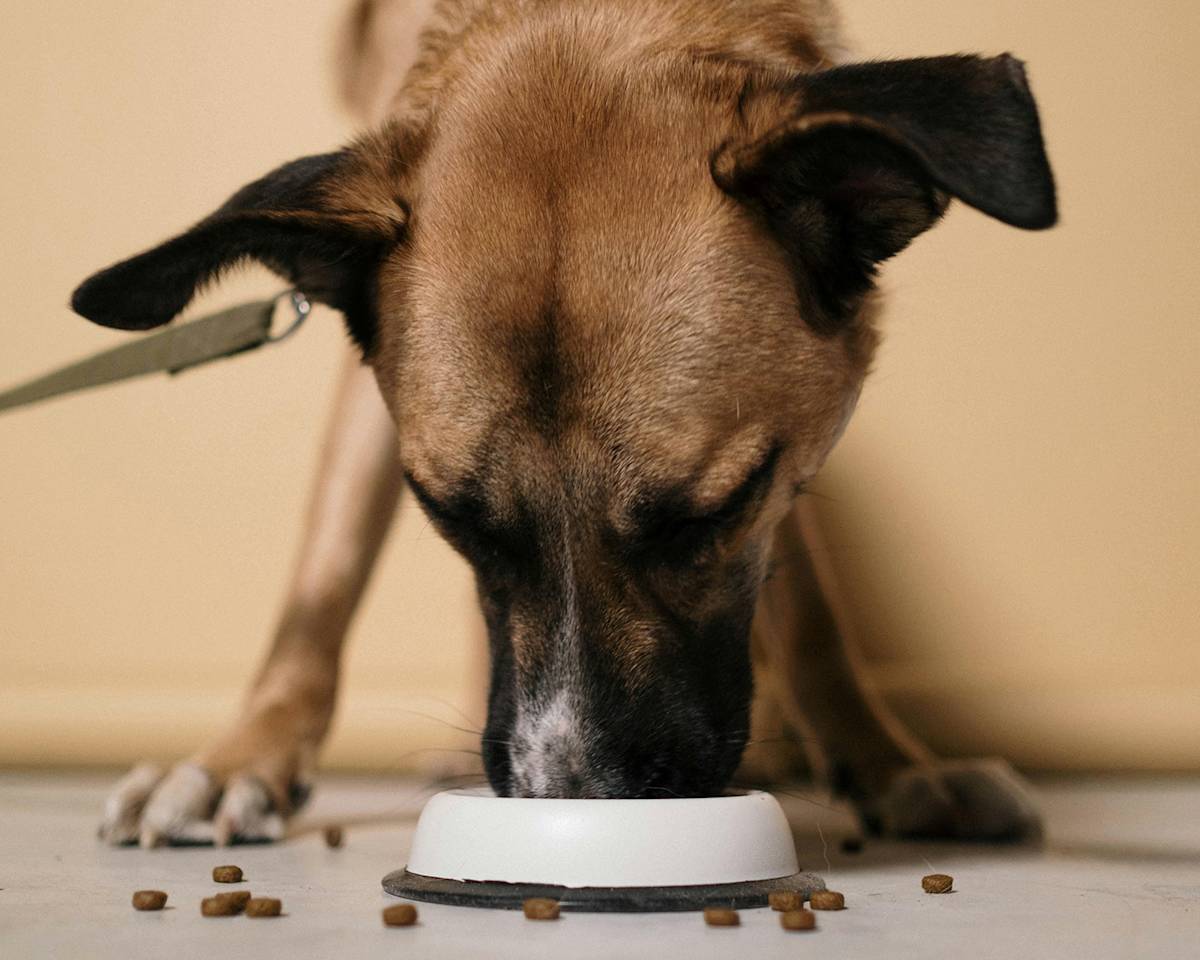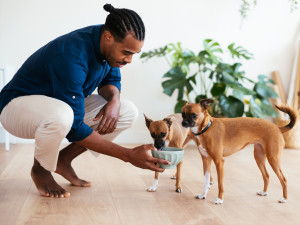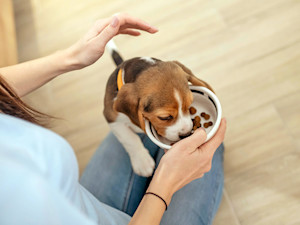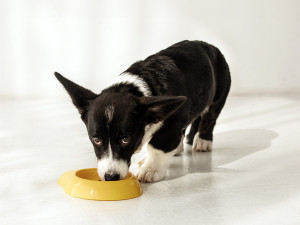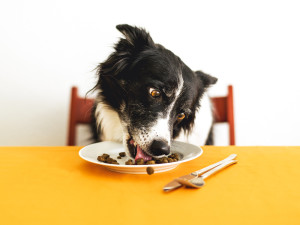25% Dog Parents Think Their Overweight Dog Is ‘Healthy’ – Are You One Of Them?
Why dog parents often overlook weight gain warning signs
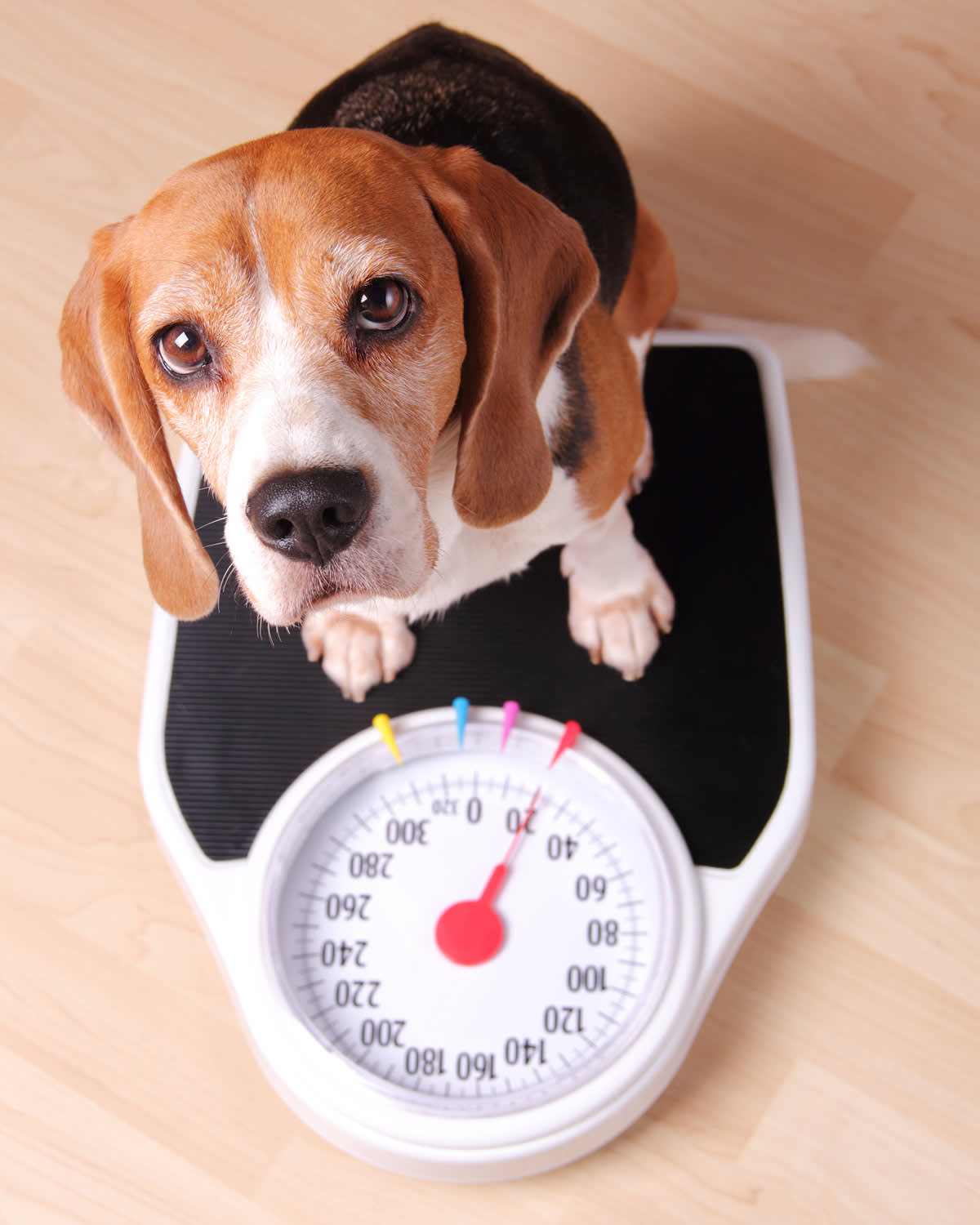
Share Article
Every time I put out a bowl of food for my lab, Betsie, she’s straight into it, gobbling it all up within seconds. Distinctly different is my best friend’s dog, a small mixed breed, who doesn’t rush to her food when it’s dispensed, only picking at it on and off throughout the day.
I’ve always wondered if Betsie’s enthusiastic eating habits might be putting her at risk of weight gain – but like many dog parents, I might be looking at her through rose-tinted glasses when it comes to her actual body condition.
It turns out I’m not alone in this potential blind spot. New research reveals a startling truth: nearly one in four pet parents underestimate their dog’s weight, with many considering their overweight pets to be at a ‘normal’ healthy weight.
The reality check
“Over the past two decades, we have consistently observed a significant discrepancy between the prevalence of pet obesity and pet owners' recognition of this issue,” observes Dr Ernie Ward, Association for Pet Obesity Prevention (APOP)opens in new tab founder and president. “Pet parents reporting that ‘pet obesity is a problem, but not for my pet’ continues to be a communication hurdle for veterinary professionals.”
This disconnect between perception and reality is more common than you might think. Recent studies show that about 25 percent of pet parents underestimate their pets’ body condition, while surveys reveal that 36 percent of dog owners considered their pet’s body condition ‘normal’ when veterinary assessment showed otherwise.
The consequences of this misperception extend far beyond aesthetics. “Carrying extra weight can put a strain on your dog’s joints and internal organs, increasing the risk of issues like arthritis, diabetes and heart disease,” warns Dr Stefanos Kalli, Veterinary Surgeon at Paws & Co Veterinary Centre. “It can also affect their energy levels, which can make exercise more difficult and reduce overall quality of life – especially as they get older.”
Why pet parents miss the warning signs
According to a new studyopens in new tab looking at food motivation and owner feeding practices in 13,900 dogs across the US, the issue isn’t just about misperception – it’s about understanding what drives our dogs’ eating behaviours and our own feeding habits.
The study found that dogs who really love food are more likely to be overweight, with some breeds being particularly prone to obesity. Sporting dogs such as Spaniels, Pointers, Retrievers and Setters, along with hounds including Greyhounds, Dachshunds, Beagles and Basset Hounds, are the most highly food motivated and therefore more prone to weight gain.
The Labrador factor
Labradors and flat-coated Retrievers in particular have a genetic mutation – a gene called POMCopens in new tab – that plays a critical role in hunger and energy use. Around 25 percent of Labradors and 66 percent of flat-coated Retrievers have the POMC mutation, which causes a greater interest in food and increased risk of obesityopens in new tab. Dogs with this mutation also use around 25 percent less energy at rest than dogs without it.
“Labradors and Spaniels are working breeds originally bred for endurance and fieldwork, which means they have big appetites to match their high-energy needs,” Dr Kalli explains. “The problem is, in a typical pet home, they rarely burn off the same amount of energy. Without strict portion control and daily activity, they’re at high risk of becoming overweight.”
Are you contributing to your dog’s weight gain?
Even well-intentioned dog parents can inadvertently contribute to their pet’s weight gain through everyday feeding behaviours. Pet parents frequently report treat-giving habitsopens in new tab that add significant calories: 58 percent of dog parents admitted to giving treats more than once a day, with an additional 24 percent saying they gave treats at least once a day. Only four percent of dog owners say they restrict treats.
“Many treats are calorie-dense, and it’s easy to give more than you realise,” says Dr Kalli. “A few extra biscuits or chews each day can quickly push a dog over their ideal calorie limit. It’s not about cutting treats altogether, but being mindful of how often they’re given and adjusting meals accordingly.” Treats should only take up around 10 percent of your dog’s daily calorie intake.
The study also found that dogs living in homes with other dogs were more likely to be obese, possibly due to food competition leading to faster eating and overconsumption.
“Some dogs do eat more quickly or greedily if they feel competition at mealtimes,” Dr Kalli notes. “This can lead to overeating or digestive discomfort. If you have multiple dogs, feeding them separately or using slow-feeder bowls can help manage this.”
Exercise vs dieting
While insufficient physical activityopens in new tab has been identified as one of the causes for obesity in dogs, exercise alone won’t solve the problem. Research shows that diet plays a far more significant role than physical activity when it comes to weight management.
In a recent studyopens in new tab, researchers separated overweight dogs into two groups – one following a diet plan, the other an exercise plan. The dieting group achieved an average weight loss of 10 percent, while the exercise group managed only two percent.
“Exercise helps support a healthy weight, improves mobility and boosts mood and is of course essential for your dog’s overall well-being,” says Dr Kalli. “However, diet plays the biggest role when it comes to weight gain or loss. Regular walks, play and enrichment are important, but they need to be paired with appropriate portion control.”
How to really see your dog’s weight
Awareness of an unhealthy body condition is the first step in treating the problem. Pet parents are more likely to manage their dog’s weight effectively if they acknowledge there is an issue, rather than remaining in denial.
No matter the breed of your dog, you should be able to feel their ribs without a thick layer of fat covering them. Looking from above, their body should go in at the waist. A dog’s chest should be wider than its stomach, so if you can’t see a notable difference between their chest and waist, they might be carrying a few too many pounds.
Reduced mobility, excessive panting, unwillingness to exercise and difficulty grooming themselves may also be signs your dog is overweight.
Your best bet is to take your dog to the vet, as they will be able to weigh and assess their body condition score (BCS), a method of categorising weight that removes subjective perception from the equation.
What can I do if my dog is overweight?
If you’ve determined that your dog is overweight, you’re already on your way to helping them achieve a healthier weight. According to Pet Obesity Prevention, several evidence-based steps can help:
Get professional guidance: first, visit your vet to examine your dog’s weight, target weight and BCS, and to rule out any underlying medical conditions. They can help you create a plan to gradually reduce your dog’s weight safely.
Measure, don’t guess: “measuring meals with a scale rather than guessing is a simple but effective change,” says Dr Kalli. Calculate how many calories are in your pet’s food and treats so you can provide precise feeding portions.
Rethink treats: as a general rule, treats should make up no more than 10 percent of your dog’s total daily calorie intake. For a medium-sized dog eating around 600 calories a day, that means no more than 60 calories from treats.
Maintain consistent exercise: Ensure your dog gets 30 minutes of exercise daily. “Exercising doesn’t need to be intense, just consistent,” says Dr Kalli.
Remember, safe weight loss is typically 1–5 percent of a dog’s current body weight per month – it’s a gradual process that requires patience and consistency.
Frequently asked questions: is my dog overweight?
Does my dog need to finish all their food?
If your dog doesn't eat all their food once you've put it out, you don’t necessarily need to be concerned. “If your dog is maintaining a healthy weight and energy level, it’s fine if they leave a little food behind,” says Dr Kalli. “It’s more important to feed the right amount for their needs, rather than focusing on an empty bowl.”
How much should I be feeding my dog?
How much you feed your dog depends on various factors including age, weight, breed and activity level. The feeding guide on food packaging is a starting point, but it's often more than some dogs need. Your vet can help calculate a more accurate daily amount based on your dog’s ideal weight and lifestyle.
How many calories a day of treats can my dog have?
“As a general rule, treats should make up no more than 10 percent of your dog’s total daily calorie intake,” Dr Kalli explains. “But it’s not just about calories – fat content matters too, especially for dogs with certain health conditions. Always check the nutritional breakdown on packaging and speak to your vet if your dog has any dietary restrictions.”
The bottom line? Take an honest look at your dog’s body condition, and don’t hesitate to ask your vet for an objective assessment. Your dog’s health – and longevity – may depend on it.
References
Dorey, Erin L., et al. “Food Motivation and Owner Feeding Management Practices Are Associated with Overweight Among Dog Aging Project Participants.opens in new tab” PubMed, U.S. National Library of Medicine, 2025.
Raffan, Eleanor, et al. “A Deletion in the Canine POMC Gene Is Associated with Weight and Appetite in Obesity-Prone Labrador Retriever Dogs.opens in new tab” Cell Metabolism, vol. 23, no. 5, May 2016, pp. 893-900.
“Genetic Mutation in a Quarter of All Labradors Hard-Wires Them for Obesity.opens in new tab” University of Cambridge Research News, 6 Mar. 2024.
Ward, Ernie. “Survey Reveals Pet Owners Don’t Recognize Excess Weight, Struggle with Pet Weight Loss, and Give Lots of Dog Treats.opens in new tab” Association for Pet Obesity Prevention, 2023.
“2024 Survey Reveals Shifts in Pet Obesity Awareness—and Where We Still Fall Short.opens in new tab” Association for Pet Obesity Prevention, 11 Apr. 2025,
Yam, Philip S., et al. “Impact of Canine Overweight and Obesity on Health-Related Quality of Life.opens in new tab” Preventive Veterinary Medicine, vol. 127, 2016, pp. 64-69. Accessed 2 Oct. 2025.
“Dog Weight Loss Information | Start Your Dog’s Healthy Journey.opens in new tab” Association for Pet Obesity Prevention.
“Obesity and Weight Loss in Dogs.opens in new tab” Cornell University College of Veterinary Medicine.
Ward, Ernie. “Obesity in Dogs: A Major Health Threat Hiding in Plain Sight.opens in new tab” American Kennel Club, 15 Feb. 2023.
Vitger, Anne D et al. “Integration of a physical training program in a weight loss plan for overweight pet dogs.opens in new tab” Journal of the American Veterinary Medical Association, vol. 248, 2016, pp. 174-82.

Lauren Crosby Medlicott
Lauren is a freelance journalist who lives with her family and black labrador, Betsie, in the south Wales valleys. When she’s not working, she loves going for a dip in a nearby river and hiking in the Brecon Beacons.
Related articles
![Man crouching down to let two dogs eat out of a bowl]()
How Many Treats Is Too Many?
The key to curbing mindless snacking – according to a veterinarian
How Much Should I Feed My Dog Based on Their Weight?
Learn how to feed your dog just right – no more, no less
![Woman feeding puppy from a bowl at home.]()
Your Ultimate Puppy Feeding Schedule
They might act hungry all day, but it’s up to you to know the facts
![black and white Corgi puppy eating out of a yellow dog bowl]()
Could Your Dog’s Diet Be Changing Their Behaviour?
It turns out the saying ‘you are what you eat’ isn’t just for humans
![Border Collie digging into a plate of dog food while seated at a yellow table]()
How You Can Easily Manage Your Dog’s Weight
Keep your pup’s weight down, and you could add years to their life. What’s better than that?
